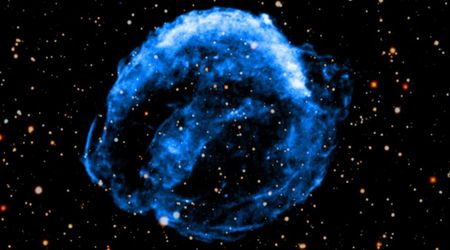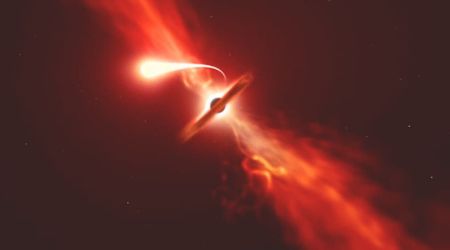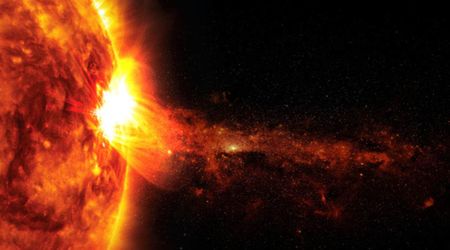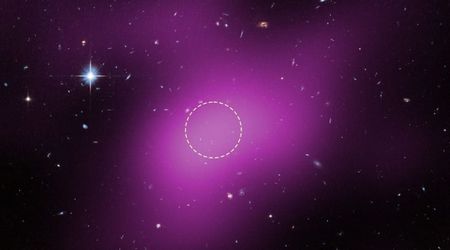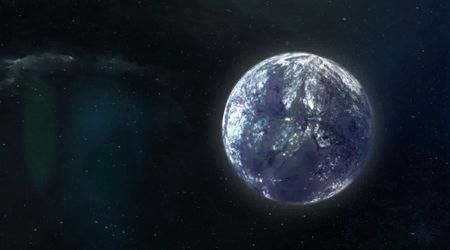Tiny 50-gram meteorite from Morocco could reshape our understanding of when the solar system formed

A diminutive 50-gram meteorite, acquired in Morocco, is poised to revolutionize our understanding of the solar system's early history, potentially rewriting the timeline for planetary formation, according to Phys.org.

New research stemming from the analysis of tiny fragments from Northwest Africa 12264 is directly contesting the long-held scientific consensus that inner solar system planets coalesced before their counterparts beyond the asteroid belt. Dr. Ben Rider-Stokes of The Open University in Milton Keynes, UK, led the groundbreaking study, recently published in Communication Earth & Environment. His team's findings suggest a synchronous formation of rocky planets across both the inner and outer regions of our solar system.

Current astronomical models posit that planets emerge from swirling disks of gas surrounding young stars through a process known as accretion. This is followed by differentiation, where intense heat leads to the formation of distinct planetary layers like the core, mantle, and crust. Historically, these processes were believed to have occurred at different junctures: approximately 4.566 billion years ago for inner protoplanets and 4.563 billion years ago for those further out. This staggered timeline was attributed to the higher water and ice content of outer rocky planets, which was thought to impede the melting of their inner cores and thus slow their development. However, the 2018 Moroccan meteorite tells a different story.

Researchers at The Open University first established the meteorite's origin in the outer solar system by analyzing their chromium and oxygen isotope ratios, which exhibit predictable variations across the solar system. Crucially, subsequent lead isotope measurement revealed the meteorite's age to be approximately 4.564 billion years. This age strikingly aligns with that of inner solar system basalt, common in planetary crusts. This remarkable consistency suggests that rocky planets beyond Jupiter may have formed with the same rapidity and concurrency as those closer to the Sun. According to the researchers, "Our findings are consistent with observations of exoprotoplanetary disks that imply rapid planetesimal formation across radial distances."

While a difference of a mere two or three million years might seem negligible in the grand cosmic scheme, it carries significant weight, potentially forcing a comprehensive re-evaluation of our understanding of planetary genesis. Moreover, the implications extend beyond our cosmic neighborhood. A clearer picture of our solar system's origins can provide invaluable insights into the formation of Earth and, by extension, planets in distant star systems.
Earth's surface holds a treasure trove of over 50,000 meteorites, each silent messenger from across our solar system. The vast majority, an astounding 99.8% originate from asteroids, fragments of the early solar system's chaotic birth. However, a tiny, yet incredibly significant, 0.2% of these extraterrestrial visitors hail from our celestial neighbors: Mars and the Moon, according to NASA.

Among this rare group are over 60 unknown Martian meteorites. These samples were violently ejected from Mars' surface by powerful meteoroid impacts. Composed of igneous rocks that crystallized from magma, they bear a striking resemblance to Earth rocks, yet possess unique compositional signatures that definitively point to their Martian origin. Similarly, the nearly 80 identified lunar meteorites share mineralogical and compositional similarities with the samples brought back by the Apollo missions. However, their distinct characteristics indicate they originated from different regions of the Moon. Studying both lunar and Martian meteorites offers an invaluable complement to the data gathered from the Apollo Moon rocks and ongoing robotic missions to Mars, further enriching our understanding of planetary evolution.
